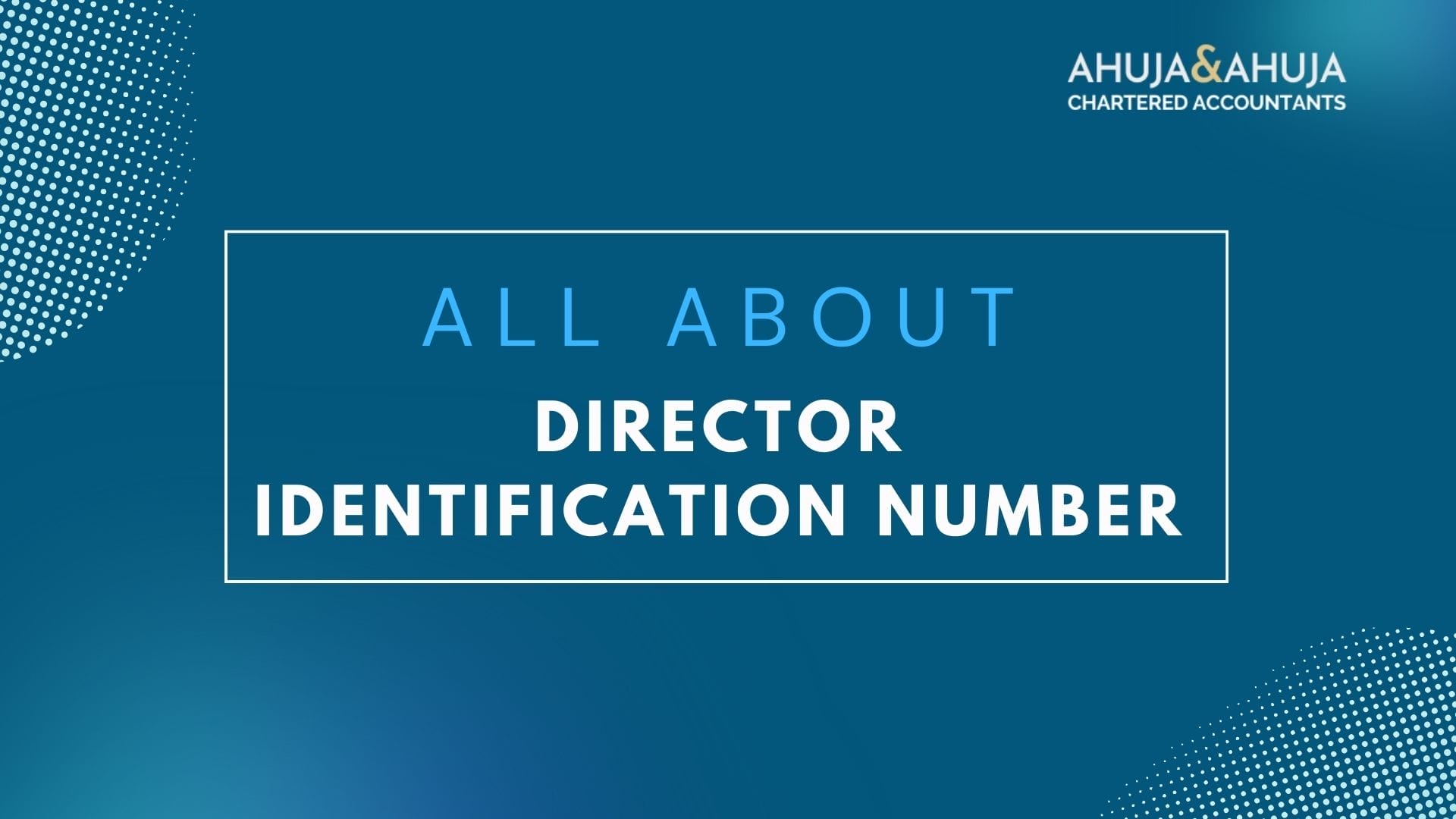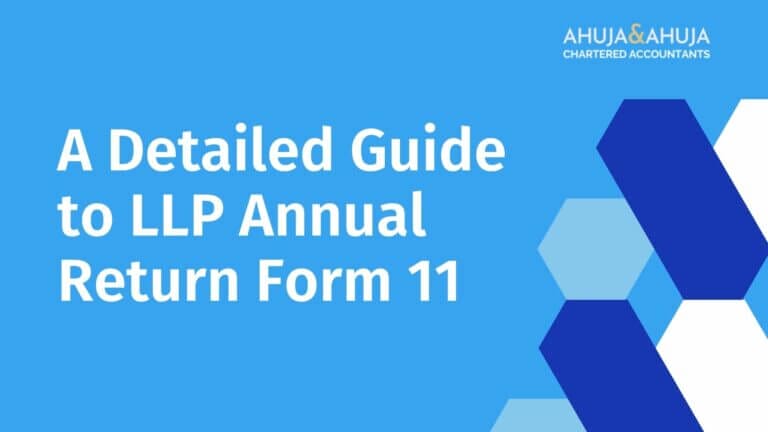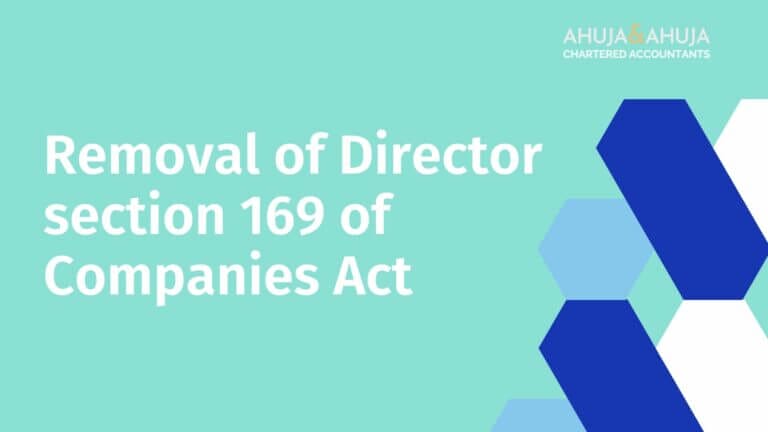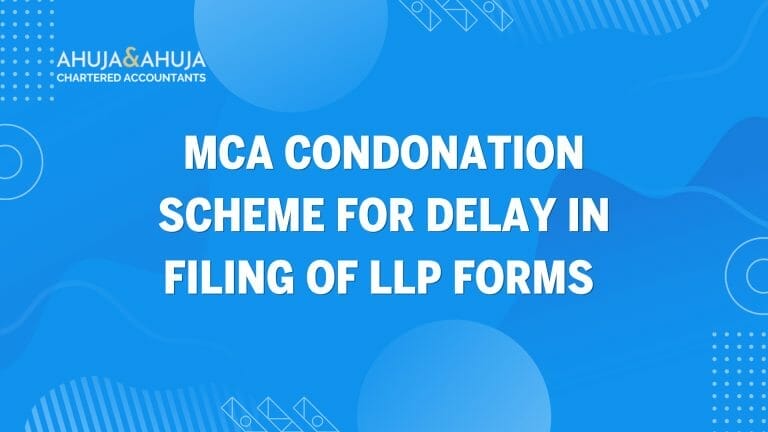All About Director Identification Number (DIN)
In a constantly evolving corporate landscape, having a unique identification is paramount in ensuring clear accountability and credibility of key figures heading the corporate entities. This identification is essential as it verifies the existence of the person, as well as the actions they do within their corporate role. Ranging from One Person Companies (OPCs) to larger organizations, every appointed director must register and receive their unique DIN.
In India, this unique identification for a company’s directors comes in the form of the Director Identification Number, or DIN. When a company gets registered, whether it’s a company registration in Gurgaon or a company registration in Noida, all directors associated with the company must have the DIN. Even if one is starting a One Person Company, an OPC, the director must have a DIN as it’s a requirement for company registration procedure in India. This is because the DIN helps maintain accountability and transparency in the corporate sector.
What is a Director Identification Number (DIN)?
Introduced under Section 266A of the Companies Act, 2006, the Director Identification Number (DIN) is quite unlike any other identification number. But, what makes it unique? It happens to be its lifetime validity, where it transcends beyond the walls of one particular company.
A DIN, in essence, is an eight-digit unique identification number allotted by the Central Government to individuals intending to be directors or those already existing as directors of a company. According to Section 153 & 154 of the Companies Act, 2013, the process to obtain a DIN is a legal requirement for anyone aspiring to become a director. This number comes with a lifetime validity, ensuring that it remains functional and relevant throughout the professional lifespan of a director.
When a director ventures into multiple companies, their DIN remains a constant – acting as a singular point of identification across varied organizational entities. Similarly, if a director decides to switch companies, the same DIN continues to represent them in the new company. This portrays the DIN’s role as not merely a number, but a personal identification mark that validates a director’s legitimacy in the corporate world.
Here’s what the Director Identification Number helps with:
- It prevents fraudulent conducts by maintaining a database of the directors of companies.
- Facilitates transparency as the professional history of a director can be traced through the DIN.
- Simplifies the process involved in the appointment of directors by correlating all their directorships with a single identification.
In the context of business setup services, specifically, the company formation in India, the DIN acts as a core prerequisite, endorsing the authenticity of a director in the foundational process of a company.
Who is authorized to allot the DIN?
The responsibility to allot a Director Identification Number (DIN) resides with the Ministry of Corporate Affairs (MCA). Specifically, within the MCA, the Central Government and the Office of the Regional Director (Northern Region) are tasked with processing the requests for DINs. When it comes to new companies, the allotment of the DIN is integrated with the process of company registration and done through the SPICe eForm.
However, if an individual wishes to become a director in an already existing company, they must file the DIR-3 form.
What is the procedure of obtaining DIN?
The process of obtaining a Director Identification Number (DIN) can be bifurcated into two distinct scenarios – applying for DIN while incorporating a new company, and applying for DIN as a director of an existing company.
For New Companies:
When an individual is incorporating a new company, be it a traditional corporation or a One Person Company (OPC), the application for a DIN is annexed with the SPICe eForm (INC-32). It streamlines the process, allowing for the central government to issue the DIN within the larger ambit of the company’s registration process.
For Existing Companies:
Existing companies looking to appoint new directors require the prospective directors to file the eForm DIR-3. Here’s a breakdown of the steps involved:
- Documentation: The applicant’s photo, proof of identity, and proof of residence are to be attached to the eForm. All documents must be attested as per the prescribed standards.
- Digital Signatures: The DIR-3 form must be digitally signed by the applicant and a current company official or a professional attesting the form. Having a valid digital signature is crucial for this step.
- Payment of Fee: The form can only be processed once the application fee is paid, which is generally done through electronic means.
- Receipt and Verification: The applicant receives a provisional DIN if potential duplicates are found. If not, an approved DIN is generated.
- Potential Duplicate Verification: In case a provisional DIN is issued, the MCA’s DIN cell conducts a back-office verification. If cleared, the provisional DIN converts to an approved DIN.
Usage of DIN
The Director Identification Number (DIN) serves as a vital component in various processes and interactions within a company. Let’s explore the key areas where DIN comes into play:
- Submission of Returns, Applications, and Information: Whenever a return, application, or any information related to a company needs to be submitted under any law, the director responsible for signing such documents must mention their DIN underneath their signature. This helps to establish the authenticity and accountability of the director.
- DIN Application Procedure and Relevant Forms:
- SPICe Form: The application for allotment of DINs to proposed first directors of new companies must be made in the SPICe (Simplified Proforma for Incorporating Company Electronically) form. This form streamlines the process of obtaining DINs for directors during the company’s incorporation.
- DIR-3 Form: Individuals intending to become directors of already existing companies must submit an application in the eForm DIR-3 for the allotment of DIN. This form is specifically designed for the purpose of obtaining a DIN.
- DIR-6 Form: If there are any changes in the particulars of the directors (such as their name, address, or other details), these changes must be filed in the DIR-6 form. This form ensures that the information regarding directors remains up to date.
It is important to note that all these forms must be filed electronically, digitally signed, and uploaded on the MCA21 portal for processing.
Document Attachments for DIN Application
When applying for DIN, certain supporting documents need to be attached to the respective forms. Let’s take a look at the document requirements for different forms:
- For SPICe Form: The applicant needs to attach proof of identity and address proof. The allocation of DIN is subject to the approval of the form.
- For DIR-3 Form: The applicant must attach the following documents:
- Photograph
- Identity proof
- Residence proof
- Verification of name, father’s name, present address, date of birth, text of declaration, and physical signature of the applicant. In the case of foreign nationals, a passport is required as the identity proof.
- All these documents must be attested by a Chartered Accountant (CA), Company Secretary (CS), or Cost Accountant in practice.
For more information on company annual return filing and other company or LLP services, click here.
For assistance with corporate tax services, including income tax, visit here.
Precautions while filing Form DIR-3 and Payment Details
When filing the DIR-3 form for obtaining your Director Identification Number (DIN), there are several key precautions that must be taken to ensure the process is completed smoothly and without errors. Here’s what you need to pay close attention to:
- Correct Details: Match all personal details such as name, father’s name, and date of birth with the Permanent Account Number (PAN) for Indian nationals. Discrepancies can lead to application rejection.
- Document Validity: Ensure that all documents attached are current and valid. Expired documents will not be accepted.
- Self-attestation: All supporting documents should be either self-attested by the applicant or attested by an authorized person such as a Gazetted Officer, Public Notary, or a company official as prescribed.
- Clarity in Documentation: Ensure that the documents are clear and legible for verification purposes.
- Adequate proof: Submit a high-resolution photograph and attested copies of proof of identity and residence as mandated.
- Precision in Entry: Details entered in the DIR-3 form must match exactly with those in the associated supporting documents.
- Payment of Fee: The application process involves a fee of INR 500, which is to be submitted electronically through net banking, credit/debit cards, or other approved online payment methods.
The MCA has streamlined the DIN application process through electronic forms and payments, thereby aligning with digital transformation initiatives. Once the form and the payment are submitted, applicants can track the status of their payment through the ‘Track Payment Status’ feature available on the homepage of the Ministry of Corporate Affairs’ website.
By meticulously adhering to these steps and precautions, applicants can enhance their chances of obtaining their DIN without delays or rejections.
Common Grounds for Rejection of DIN Application and Resubmission Process
Applying for a Director Identification Number (DIN) is usually a straightforward process, but there are stumbling blocks that applicants may hit. Let’s examine the common reasons why a DIN application may be rejected and the process to follow if resubmission is required.
Common Reasons for Rejection:
- Incomplete Documentation: Missing proof of identity, address, or date of birth.
- Document Validity: Submission of expired or invalid documents.
- Mismatched Details: Difference in details between application form and supporting documents.
- Improper Attestation: Lack of self-attestation or improper attestation by a certified authority.
- Duplicate Application: Filing more than one application for the same applicant without the first one being disposed of.
- Missing Photo or Signature: Applications lacking a photograph or required signatures are subject to rejection.
Should your DIR-3 form be flagged for any of these issues, the procedure requires a resubmission with correct and complete documentation.
Procedure for Resubmission:
- Notice for Correction: If your application is marked for resubmission, you will receive a prompt to correct the flagged deficiencies.
- 15-Day Window: You must address the issues and resubmit your form within 15 days from the date of intimation.
- Resubmission Fee: Typically, no extra fee is charged for resubmitting the form.
- Corrected Submission: Ensure all issues are rectified as per the instructions given, and documents are reattached as required.
In case of Rejection:
If the DIN application is ultimately rejected, one must start afresh by submitting a new DIR-3 form accompanied by all the correct and valid documents.
Directors must ensure that every single criterion is met diligently to streamline their application’s approval—any form of discrepancy can impede their professional progress within the corporate machinery.
Who can sign e-Form DIR-3 and DIR-6?
To authenticate and submit the e-Form DIR-3, which is the application for obtaining a Director Identification Number (DIN), specific authorized signatories are required. These include the individual applying for the DIN and one of the following:
- For e-Form DIR-3:
- A Company Secretary of the company (in full-time employment) where the applicant is proposed to be appointed as a director.
- Managing Director (MD), Director, CEO, or CFO of the existing company proposing the appointment.
The digital signatures of the applicant and the certifying authority ensure that the information provided is verified and accurate, adding a layer of security and credibility to the application process. Digital signatures have ushered the ease of business setup and compliance into a digital age, streamlining processes that were once entirely paper-based.
- For e-Form DIR-6:
- Any changes in the particulars of the directors after the initial application have been processed must be submitted through e-Form DIR-6.
- Similar to DIR-3, this form must be digitally signed by the applicant.
- It then requires further certification from a Chartered Accountant, Company Secretary, or Cost Accountant in full-time practice. Alternatively, it can be certified by a member of the Institute of Company Secretaries of India (ICSI) or a Director of the company in which the applicant is a director.
It is crucial to ensure that the certifying professional is duly registered and in good standing to avoid any potential discrepancies or rejections of the form by the MCA.
Generation of DIN
After the applicant has completed the DIN application process and submitted the necessary forms, the following steps take place:
- Application Fee Payment and Submission: Once the forms and supporting documents are uploaded, the applicant needs to pay the applicable fee through net banking, credit card, or NEFT using the online payment window.
- Application Number Generation: Upon successful submission of the application and fee payment, the system will generate an application number. This number serves as a reference for tracking the application.
- Central Government Processing: The Central Government will process the application and make a decision regarding its approval or rejection.
- DIN Approval or Rejection: If the DIN application is approved, the Central Government will communicate the DIN to the applicant within 1 month from the date of application. This communication may be in the form of an email or any other appropriate means.
If the application is rejected, the Central Government will send an email stating the reason for rejection. Additionally, the reason for rejection will be published on their website. The applicant will have 15 days to rectify the reason for rejection. If the applicant successfully rectifies the reason to the satisfaction of the Central Government, the DIN will be allotted. However, if the reason remains unresolved, the application will be labeled as INVALID.
Intimation of DIN to the Company
Within one month of receiving the DIN from the Central Government, it is the responsibility of the director to inform all the companies where they serve as a director about their DIN. This process ensures that the company has updated and accurate information about its directors.
Intimation to the Registrar of Companies (RoC)
Once the director has intimated their DIN to the company, the company itself must intimate the RoC within 15 days from the date of receiving the information. This step ensures that the RoC has the necessary records and that there is compliance with the requirements.
It is essential for both the director and the company to fulfill these obligations, as failure to do so can result in penalties.
Changes and Updates in DIN Information
As time goes on, it is natural for changes to occur in the information associated with a Director Identification Number (DIN). This section will cover the process for updating and making changes to the DIN information.
- Change in Director’s Particulars: If there are any changes to a director’s name, address, contact details, or any other particulars that were included in the initial DIN application, it is necessary to update the information. This ensures that the DIN records remain accurate and up to date.
To update the director’s particulars, the director needs to file the DIR-6 form online. The appropriate supporting documents should also be submitted along with the form, verifying the changes made.
- Change in Company Details: If the company undergoes changes such as a change in name, registered office address, or any other related information, this should also be communicated to the Registrar of Companies (RoC). The director should intimate the updated company information to the RoC within the specified time period.
The process for updating company details related to DIN can vary depending on the specific changes. It is recommended to consult a qualified professional or refer to the relevant regulations to ensure compliance.
- Maintaining Accurate Records: Directors should maintain accurate records of their DIN and associated information. This includes keeping track of any updates or changes made and ensuring that the information is updated when necessary.
- Responsibility of the Director and Company: It is the responsibility of both the director and the company to ensure that any changes or updates in DIN information are promptly communicated to the relevant authorities. This helps in maintaining transparency and compliance with regulatory requirements.
Reasons for Cancelling or Surrendering DIN
While a Director Identification Number (DIN) has lifetime validity, there are certain circumstances under which a DIN may be cancelled or surrendered. The Central Government may cancel the DIN or the director may choose to surrender it under the following circumstances:
- Duplicate DIN Issued: If a director has been issued multiple DINs, the Central Government may cancel the duplicate DINs to avoid confusion and maintain a single valid DIN for the director.
- Fraudulent Means: If a DIN was obtained by fraudulent means, the Central Government may cancel the DIN to maintain the integrity of the identification system.
- Death of the Concerned Person: In the unfortunate event of the death of a director, the Central Government cancels the DIN to reflect the change in the directorship.
- Unsound Mind or Insolvency: If a director has been declared of unsound mind by a court or has been adjudicated as insolvent, the Central Government may cancel the DIN to comply with legal requirements.
Directors also have the option to surrender the DIN voluntarily by filing the DIR-5 form. In the case of surrender, the director must declare that they have never been appointed as a director in any company and that the DIN has never been used for filing any document with any authority.
However, it is important to note that once a person has been appointed as a director in accordance with the Companies Act 2013, they cannot relinquish their DIN in the future. Even if they no longer hold directorship in any company, their DIN will remain active.
Disclaimer
The materials provided herein are solely for educational and informational purposes. No attorney/professional-client relationship is created when you access or use the site or the materials. The information presented on this site does not constitute legal or professional advice and should not be relied upon for such purposes or used as a substitute for professional or legal advice.







